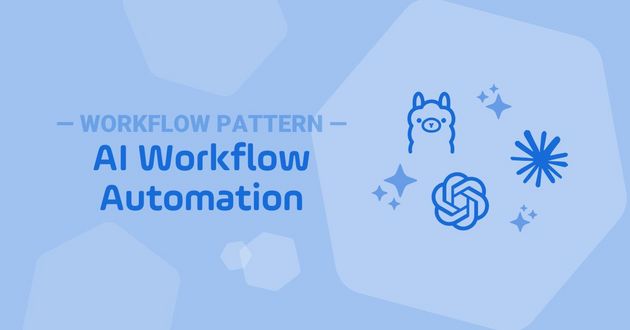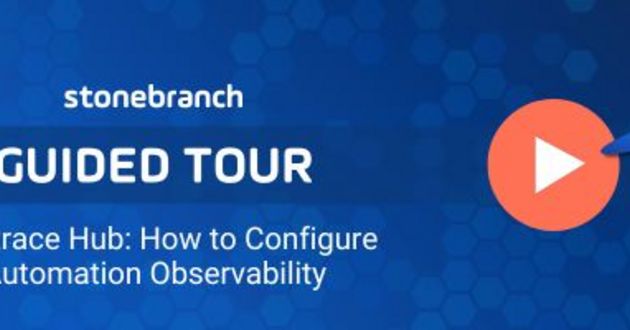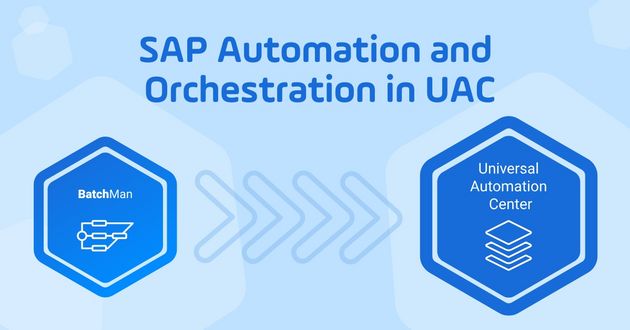Cloud Automation: Customer Success Stories
Stonebranch customers share practical, real-world approaches to automate and orchestrate jobs across cloud, multi-cloud, and hybrid IT environments.
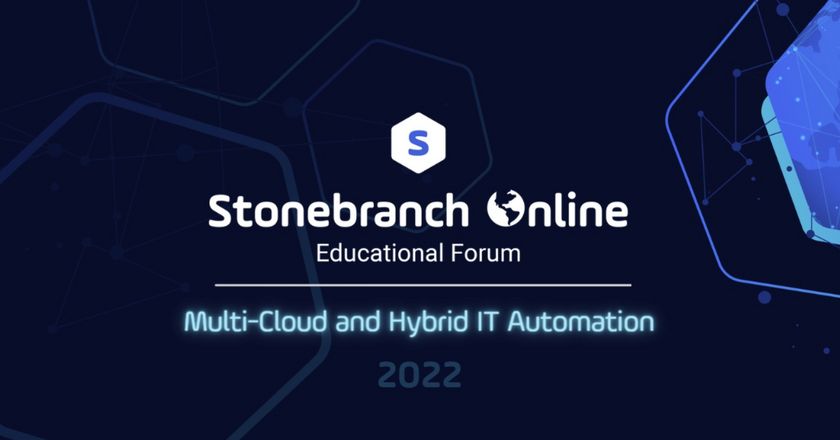
While there’s lots of talk in the industry about cloud automation, there’s no doubt that the world has turned hybrid. We’ve gone from having everything in on-premises data centers, and now the world’s almost divided. There’s a bunch of stuff still on-prem, and a bunch of stuff in the cloud, and to top it off, a bunch of data that needs to be available in both places. As an enterprise, the real goal is to be able to orchestrate jobs that are on-prem and in the cloud.
In response to this increasing complexity, automation has evolved into orchestration. Gartner recognized this shift in 2020 when it created the service orchestration and automation platform (SOAP) category. SOAPs make it possible for cloud, infrastructure, development, and data teams to work together to centrally orchestrate all the tools and platforms they use, helping enterprises:
- Centrally manage and orchestrate jobs across on-prem and cloud environments.
- Avoid vendor lock-in by connecting workflows across vendors, such as AWS, Azure, and Google Cloud.
- Leverage existing tools — and add new tools as you go — by “automating the automators”. In other words, centrally orchestrate your job schedulers, open-source tools, and more.
- Democratize automation to empower teams throughout your organization, including data and development teams.
The Stonebranch Universal Automation Center (UAC) is a SOAP that helps customers achieve these goals every day. During the Stonebranch Online Educational Forum 2022, our virtual user event series, a few of those customers shared their stories. Read on to learn how they use UAC to orchestrate automated activities in the cloud, on-prem, and beyond.
HCA Healthcare: Multi-Cloud Orchestration
Lea Latendresse, an enterprise data intelligence architect for HCA Healthcare, joined Stonebranch Online to discuss multi-cloud orchestration within their data pipelines.
She explained the importance of data discoverability (how do I find the data?), observability (how can I trust the data?), and democratization (how can I use the data?). For data owners at HCA, that means ensuring they have high-quality data, then treating that data as a product itself — an output of their system of record.
After all, if the data isn’t discoverable, it’s of no value.
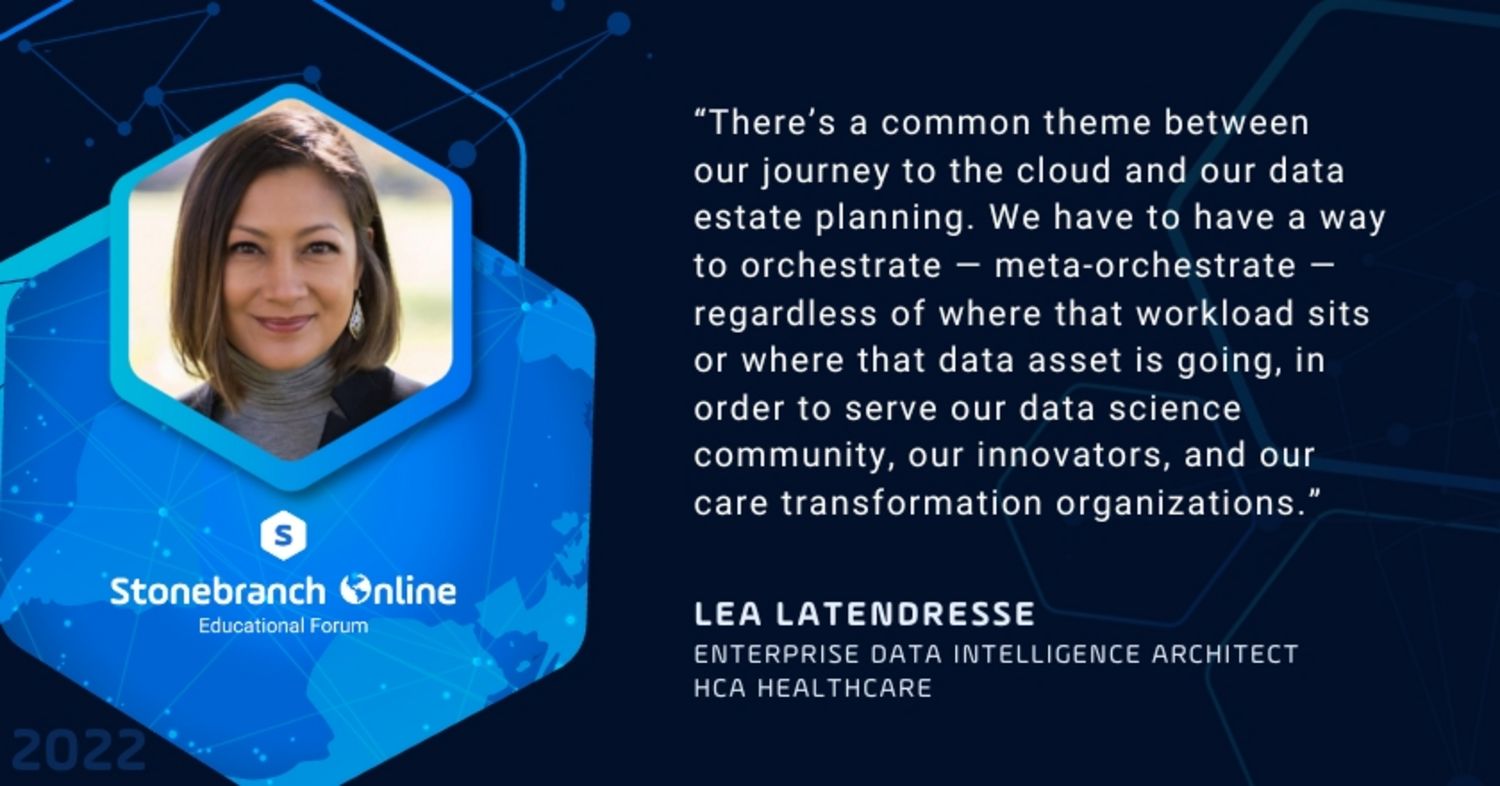
Demonstration: Refresh a Power BI Dashboard
Karthik Mohan, a solution engineer for Stonebranch, joined Stonebranch Online to demonstrate how UAC can automate IT processes between public cloud providers and SaaS-based applications.
Karthik provided a live walkthrough of the workflow shown below, which starts with a new data upload to AWS S3 and ends with that same data being reflected in a Microsoft Power BI interactive map visualization.
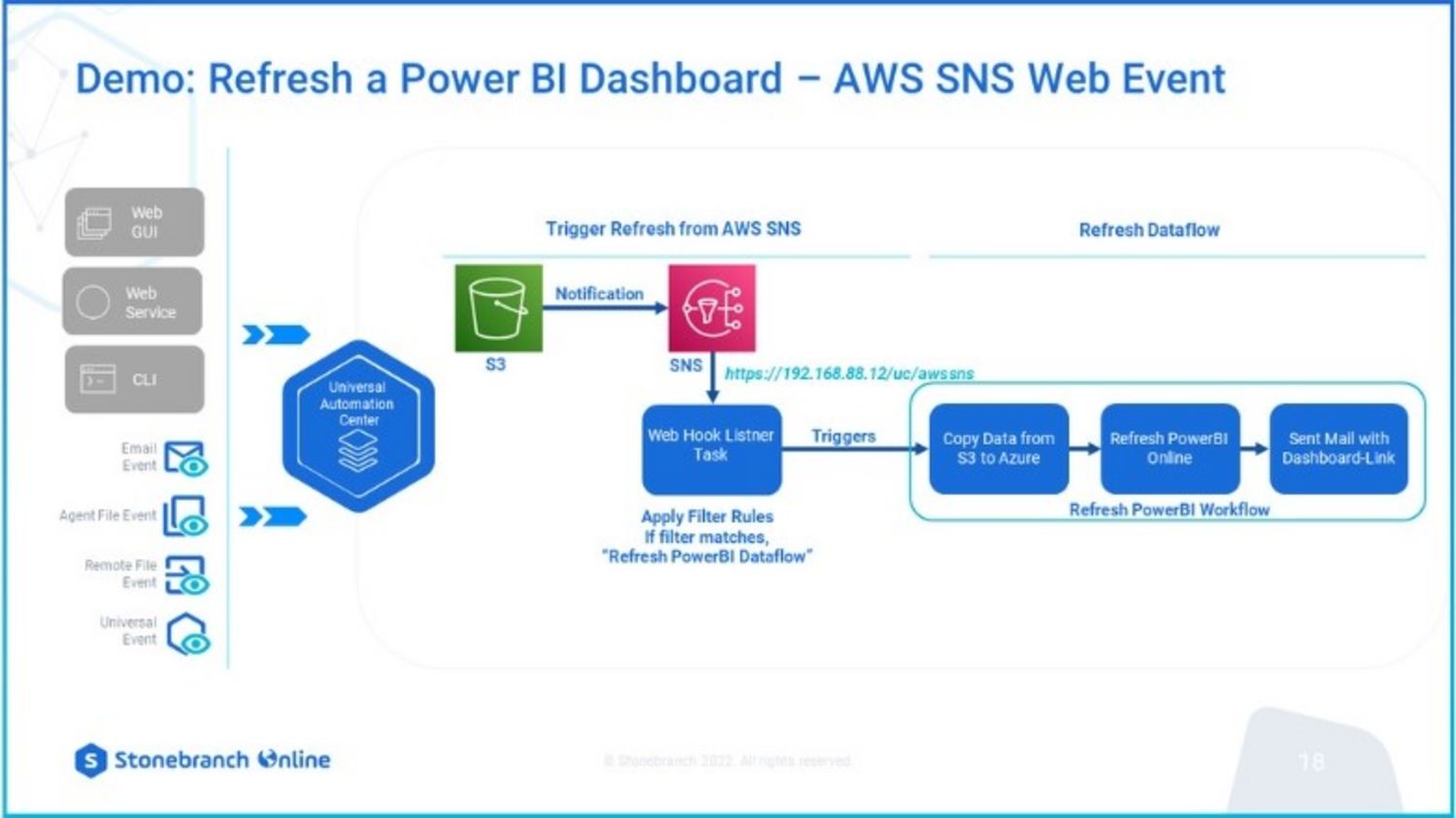
As you can see from the diagram, UAC centralizes the management of automation tasks across AWS, Azure, Slack, Power BI, and email, including tasks to:
- Initiate an inter-cloud data transfer to copy sales data from AWS S3 to Microsoft Azure blob storage.
- Send a Slack notification to the owner of the Power BI dashboard, giving them the opportunity to approve or deny the data refresh.
- Receive the refresh approval, then refresh the Power Bi source data for the interactive map visualization.
- Send an email to Power BI dashboard users to notify them that the dashboard has been updated.
Achmea: Hybrid-Cloud and Multi-Cloud File Transfer
Gerlof Bril, an infrastructure architect with Achmea, offered some insight into how Achmea automates file transfers in their hybrid and multi-cloud environments. Achmea started with UAC more than a decade ago, looking to consolidate the management of their data transfer and workload automation activities.
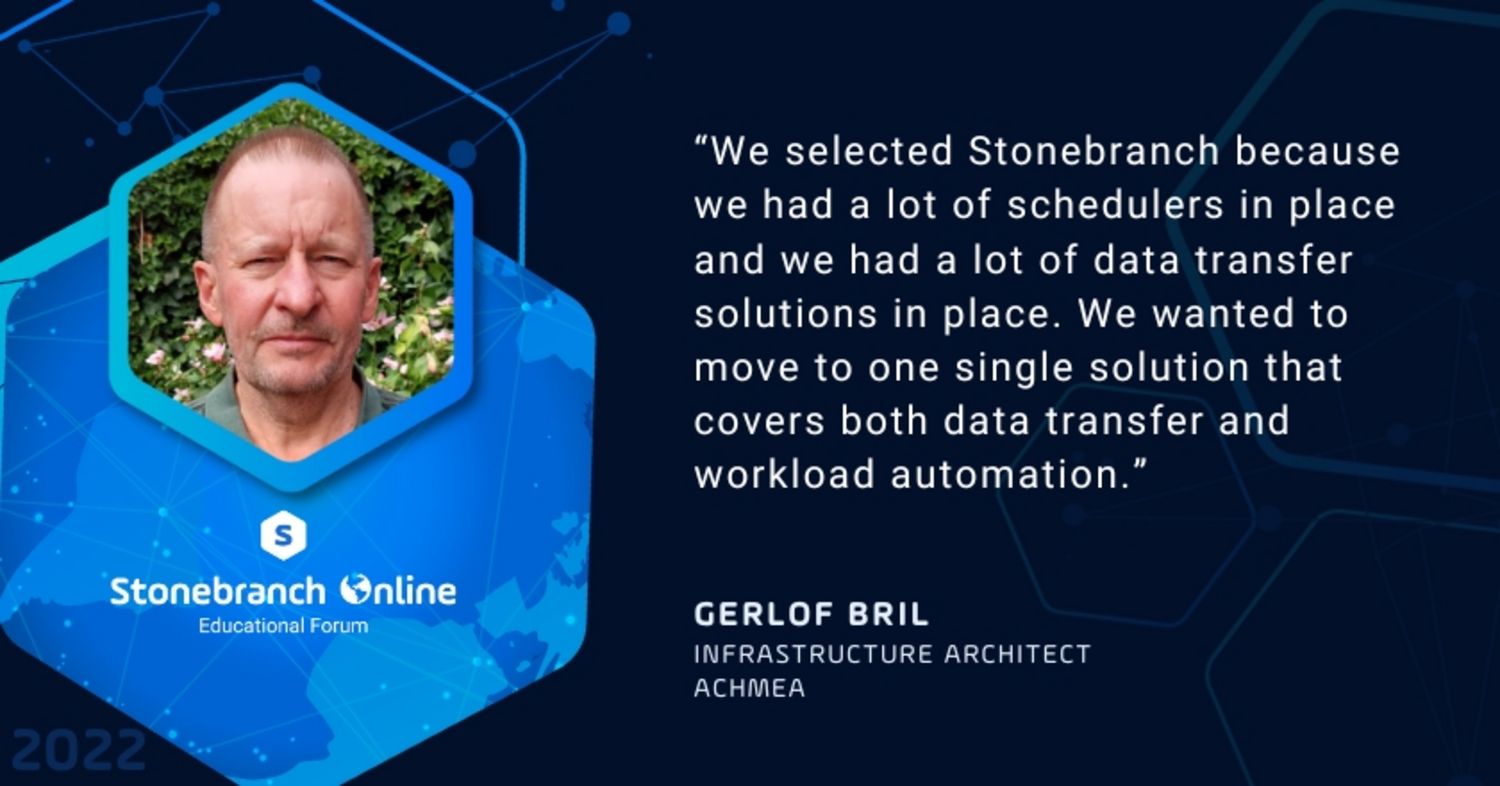
In the last few years, Achmea adopted a cloud-first approach and, whenever possible, has been moving from on-prem data centers to Azure. For instance, their SAP implementation has already moved to the cloud, and they’re in the process of moving the rest of their mainframe-based applications to the cloud.
Throughout their transition to the cloud, Achmea has used UAC to keep data flowing smoothly, including:
- Internal data transfers, using Stonebranch UDM for managed file transfer, is the original data transfer solution provided by Stonebranch. It has since been extended to enable virtual machine (VM) workflows and is fully compliant with Achmea’s enterprise integration patterns.
- Private cloud to public cloud streaming. Stonebranch’s inter-cloud data transfer solution helps Achmea trigger Azure Data Factory pipelines.
- File transfers with containers and VMs. Stonebranch enables hybrid IT data transfers for Achmea through a combination of the Universal Data Mover solution, as well as Universal Agents and Universal Tasks.
- External (B2B) data transfers, using a centralized file transfer gateway to share data with business partners.
Demonstration: Stream Data Between Cloud Storage Providers
In another demonstration, Karthik showed how UAC enables inter-cloud streaming between multiple public and private cloud environments, as well as on-prem systems.
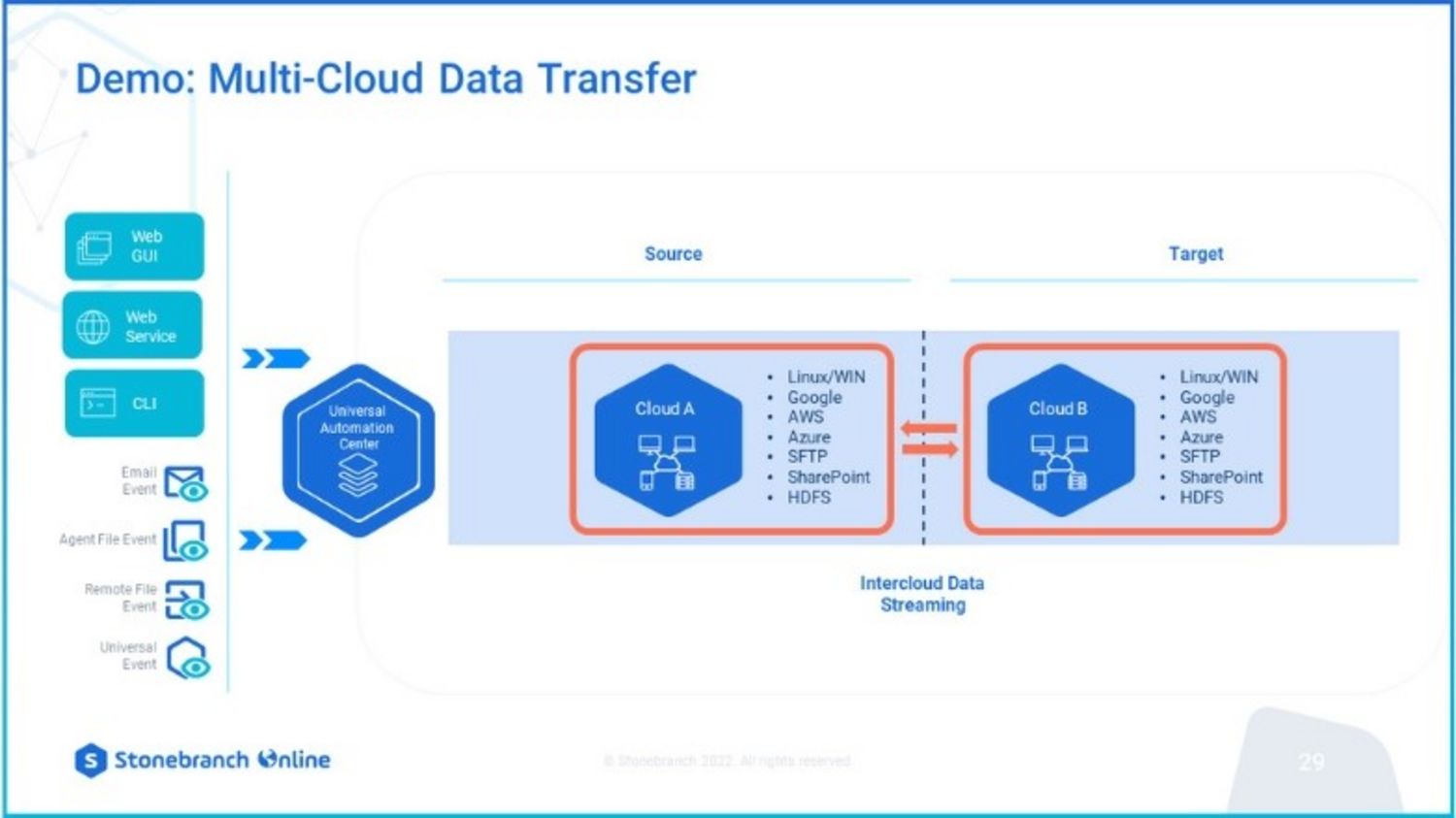
He walks through a variety of automated file transfer and file monitoring tasks, including:
- Upload files to Azure Data Lake Storage Gen2
- Monitor files in Azure Data Lake Storage Gen2
- Transfer files to an AWS bucket, using an SFTP server
- Sync data between Linux and Microsoft SharePoint
- Transfer data between AWS and Azure
Using UAC, no intermediary storage is required for any of the file transfer examples demonstrated.
AXA: Container and Microservice Automation
Werner Tenbrock, a middleware systems specialist for AXA Switzerland, shared some details about AXA’s modernization journey and the current use of UAC and OpenShift to enable container-based application deployment.
In 2016, AXA Switzerland launched an initiative to bring all existing and new applications to the cloud, preferably using a software-as-a-service model. The transformation was supported by both Red Hat and Stonebranch, with most new applications deployed on OpenShift running on Azure infrastructure.
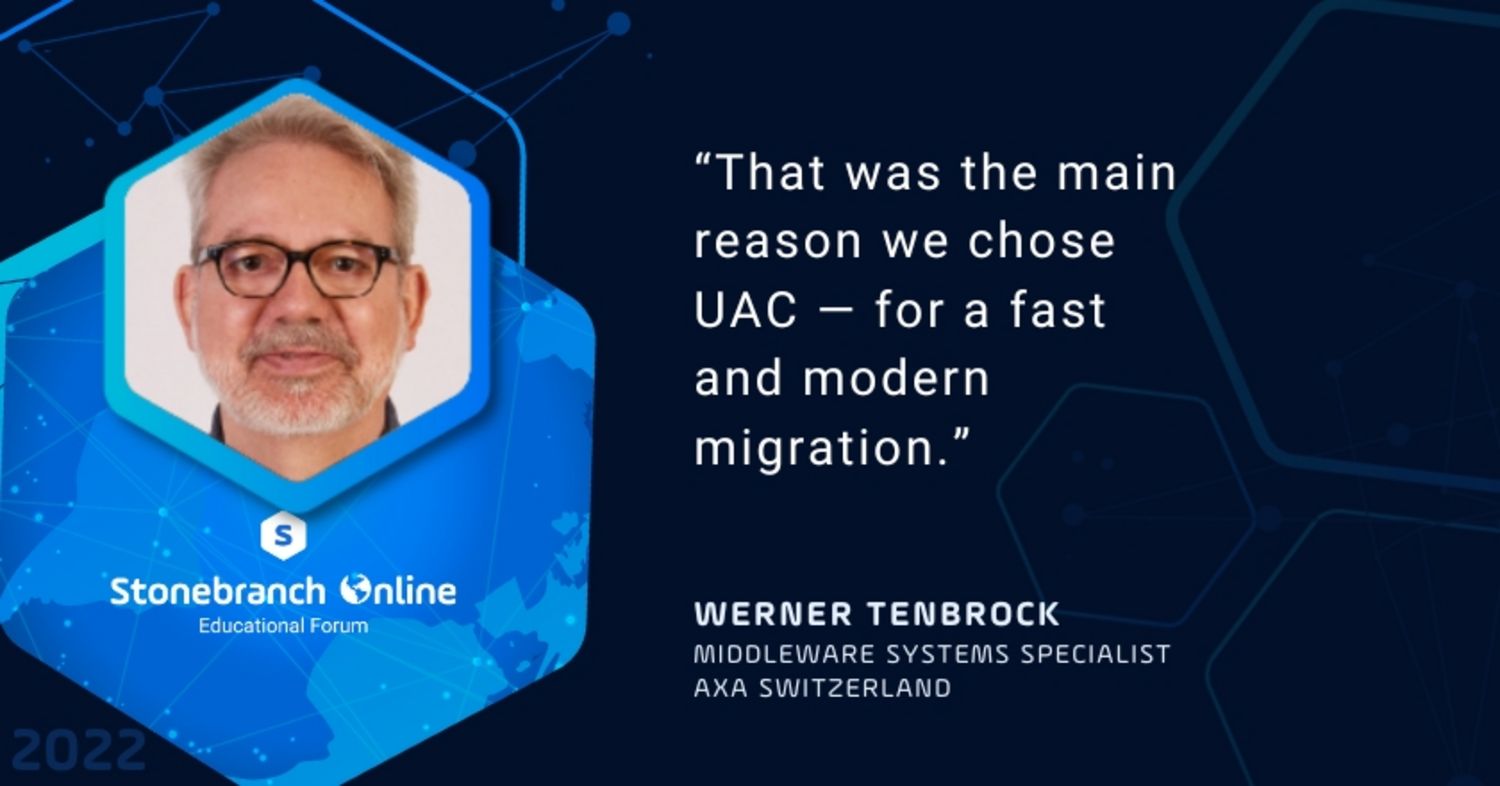
The challenge? Migrated applications still require data located on the mainframe and on some servers. For example, the MyAXA web application requires insurance policy data from the mainframe.
Demonstration: Mainframe-to-OpenShift File Transfers
After a short introduction to OpenShift by Vladimir Rimar, a senior cloud consultant for Red Hat, Stonebranch’s Nils Buer demonstrated how UAC orchestrates file transfers between AXA’s mainframe and containers running on Red Hat OpenShift.
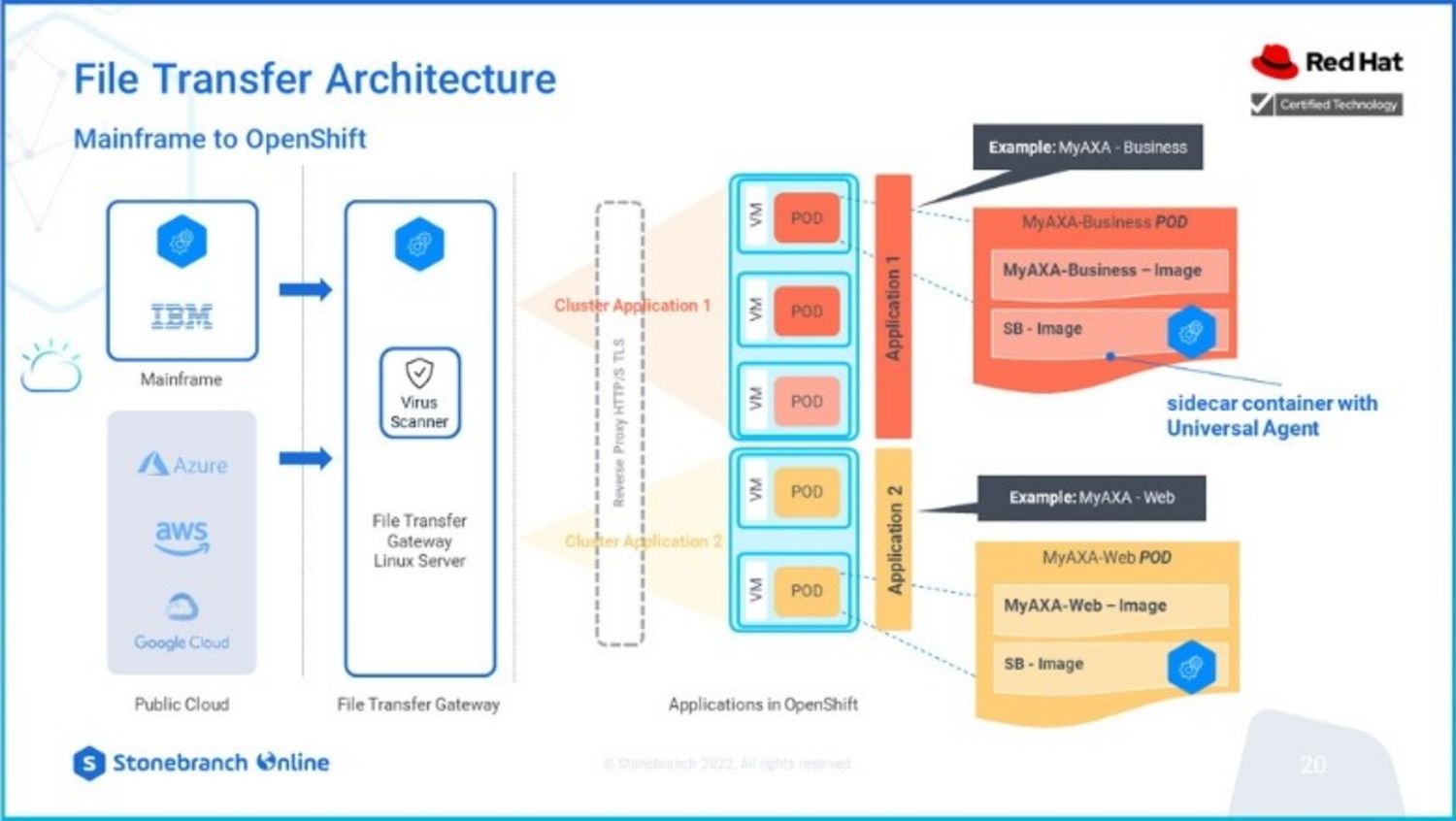
As shown in the diagram above, each OpenShift application pod can have multiple containers that make up the entire application. In addition to the application-related container, each pod also includes a Universal Agent container. This type of supporting container is called a sidecar container in OpenShift or Kubernetes. The Universal Agent in this container can receive files from any other Universal Agent within the AXA network using the Stonebranch Universal Data Mover solution.
Stonebranch: Cloud Infrastructure Automation
There are many ways to automate cloud infrastructure. Unfortunately, with so many processes and tools used along the way, there is a fundamental “orchestration” gap.
If you’d like to see how Stonebranch uses UAC to orchestrate our very own cloud infrastructure, watch Cloud Infrastructure Automation with the UAC. In this virtual session, two Stonebranch experts — Cinu Varghese, VP of cloud operations and product support, and Matthew Burke, senior technical support engineer — demonstrate our real-world setup.
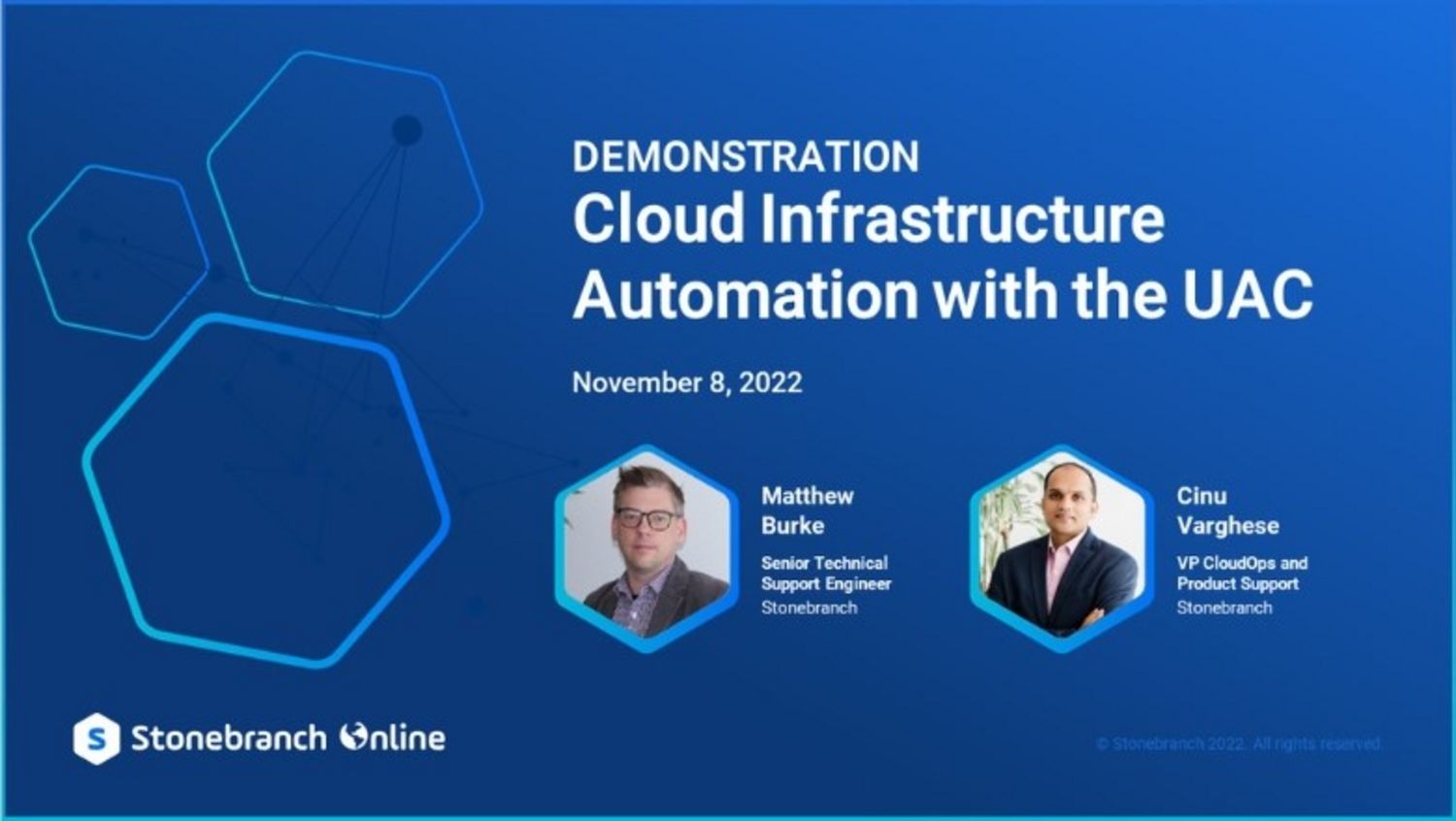
Start Your Automation Initiative Now
Schedule a Live Demo with a Stonebranch Solution Expert


